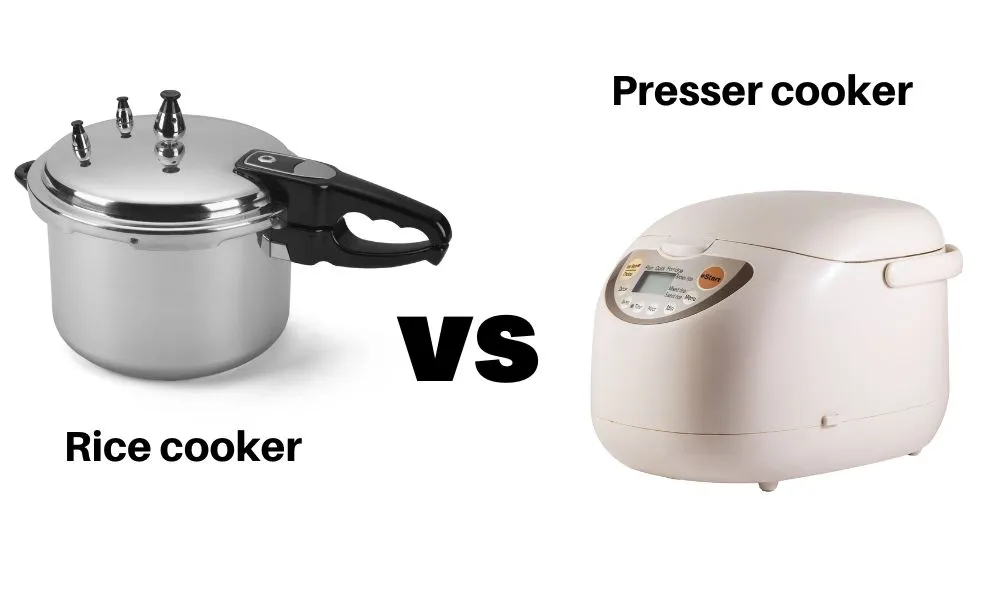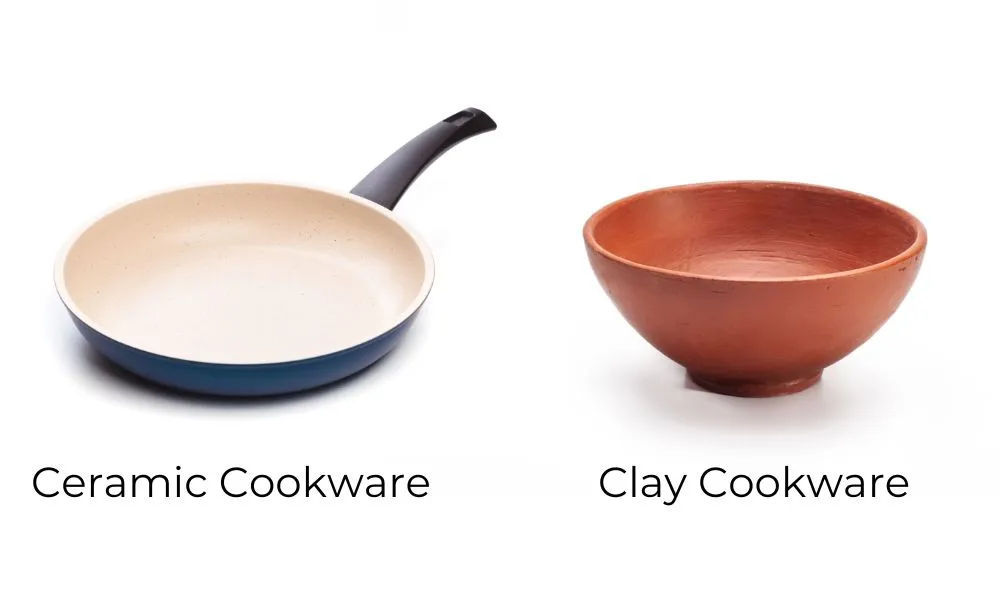Bread makers have revolutionized home baking, making it easier than ever to enjoy freshly baked bread at any time. Whether you’re a seasoned baker or a beginner, owning a bread maker can enhance your culinary skills and provide you with the satisfaction of creating your own delicious loaves. In this comprehensive buying guideline, we will explore everything you need to know about choosing the perfect bread maker for your kitchen – Bread Maker Buying Guideline.
Table of Content
- Briefing – What is a Bread Maker?
- Benefits of Owning a Bread Maker
- Factors to Consider – Bread Maker Buying Guideline
- Maintenance and Cleaning for a Bread Maker
- Top 10 Bread Makers of 2023
- Tips for Choosing the Right Bread Maker
- Conclusion
- FAQs (Frequently asked questions) about Bread Maker Buying Guideline
Briefing – What is a Bread Maker?

Bread makers are kitchen appliances designed to automate the bread-making process. They consist of a bread pan, kneading paddles, and various settings to control the bread type, crust color, and more. By simply adding the ingredients, selecting the desired settings, and pressing a few buttons, you can have a freshly baked loaf of bread without the hassle of kneading and waiting for the dough to rise.
Benefits of Owning a Bread Maker

Owning a bread maker comes with several advantages. Firstly, it saves time and effort. The machine handles all the mixing, kneading, and baking, allowing you to focus on other tasks or relax while the aroma of freshly baked bread fills your home. Secondly, you have full control over the ingredients, allowing you to create healthier and personalized bread options. Additionally, bread makers often offer a variety of settings, enabling you to bake different types of bread, such as whole wheat, gluten-free, or artisanal loaves.
Factors to Consider – Bread Maker Buying Guideline

Before purchasing a bread maker, it’s important to consider various factors to ensure you make the right choice for your needs. Let’s explore these factors in detail.
Size and Capacity
Bread makers come in different sizes and capacities. Consider the available space in your kitchen and the amount of bread you plan to bake. Smaller units are suitable for individuals or small families, while larger models are ideal for those who bake in larger quantities or have a big family to feed.
Bread Types and Settings
Different bread makers offer various settings to bake different types of bread. Some common settings include basic, whole wheat, gluten-free, French, and sweet bread. Make sure the bread maker you choose offers the settings you desire to bake your favorite bread varieties.
Programmable Features
Programmable features allow you to customize the bread-making process according to your preferences. These features include delayed start timers, crust color options, and dough-only cycles. Consider which programmable features are important to you and ensure the bread maker you select has them.
Crust Options
If you have a preference for a specific crust color, make sure the bread maker offers crust options such as light, medium, and dark. This allows you to achieve the desired crust texture and color for your bread.
Kneading Paddles
Some bread makers come with dual kneading paddles, while others have a single paddle. Dual paddles provide better kneading and mixing results, resulting in a well-risen loaf with a consistent texture. However, bread makers with a single paddle are often more affordable and can still produce satisfactory results.
Delay Timer
A delay timer allows you to set a specific time for the bread maker to start the baking process. This feature is particularly useful if you want to wake up to the smell of freshly baked bread or have a loaf ready when you come home from work. Consider whether a delay timer is essential for your baking routine.
Noise Level
Some bread makers can be noisy during operation, which may be a concern if you have a noise-sensitive household. Look for models that advertise low-noise operation if this is a priority for you.
Maintenance and Cleaning for a Bread Maker
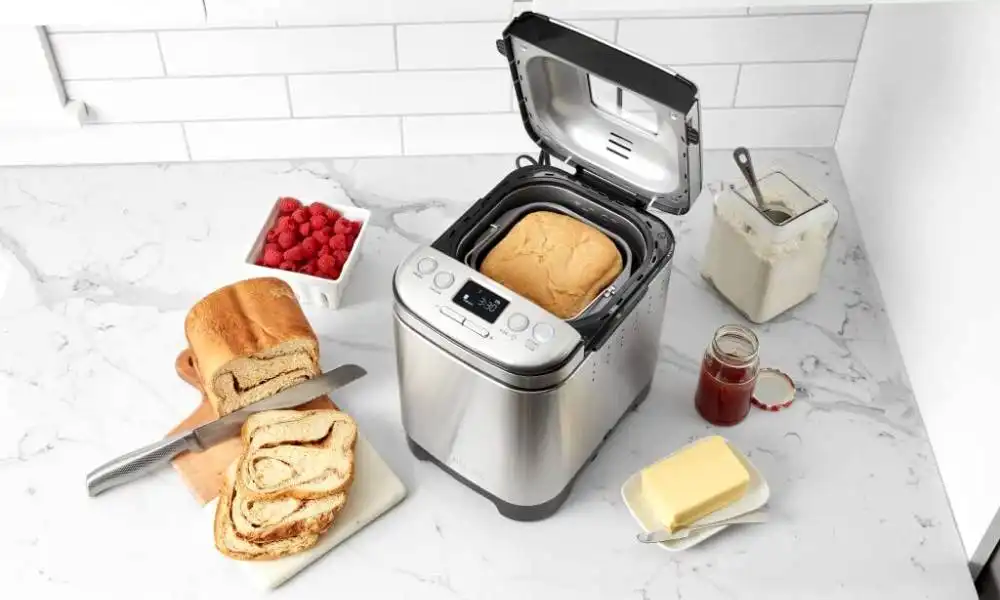
Consider the ease of cleaning the bread maker. Removable parts such as the bread pan and kneading paddles make cleaning more convenient. Some models also have non-stick surfaces, reducing the chance of bread sticking to the pan.
Understanding Bread Maker Features
To make an informed decision, it’s important to understand the features commonly found in bread makers. Let’s take a closer look at each feature and how it impacts the bread-making process.
Size and Capacity Explained
The size and capacity of a bread maker refer to its physical dimensions and the amount of bread it can bake at once. Bread makers can range from compact units that bake 1-pound loaves to larger models that can handle 2-pound or even 2.5-pound loaves. Consider your baking needs and kitchen space when choosing the appropriate size and capacity.
Bread Types and Settings Explained
Different bread makers offer various pre-programmed settings to bake specific bread types. Basic settings are suitable for simple white or whole wheat bread, while advanced settings cater to more specialized bread varieties like gluten-free, artisanal, or even cake. Familiarize yourself with the available settings and choose a bread maker that aligns with your baking preferences.
Programmable Features Explained
Programmable features allow you to customize the bread-making process. Delayed start timers let you set a specific time for the bread maker to begin baking, ensuring you have freshly baked bread at your desired time. Crust color options allow you to choose the level of browning for the crust, whether you prefer a light, medium, or dark crust. Dough-only cycles are useful if you want to prepare dough for rolls, pizza, or other baked goods without baking them in the bread maker.
Crust Options Explained
Crust options refer to the ability of the bread maker to produce different crust colors and textures. Light crusts have a softer texture and lighter color, while dark crusts are more firm and have a deeper brown color. Some bread makers also offer a medium crust option for those who prefer a balance between light and dark. Choose a bread maker that offers the crust options you enjoy.
Kneading Paddles Explained
Kneading paddles are responsible for mixing and kneading the bread dough. Bread makers can have either a single or dual kneading paddle design. Dual paddles provide better mixing and kneading results, resulting in a more uniform texture and consistent rise. However, bread makers with a single paddle are still capable of producing satisfactory results.
Delay Timer Explained
A delay timer allows you to set a specific time for the bread maker to start the baking process. This feature is particularly useful if you want to wake up to freshly baked bread in the morning or have a loaf ready when you return home from work. By setting the delay timer, you can ensure your bread is freshly baked at your desired time.
Noise Level Explained
Noise level refers to the amount of noise a bread maker produces during operation. While most bread makers generate some noise due to the motor and mixing process, some models are designed to minimize noise. This can be important if you have a noise-sensitive household or prefer a quieter baking experience.
Maintenance and Cleaning Explained
Maintenance and cleaning considerations are essential for any kitchen appliance. Look for bread makers with removable parts, such as the bread pan and kneading paddles, as they are easier to clean. Some models also feature non-stick surfaces, reducing the chance of bread sticking to the pan. Follow the manufacturer’s instructions for proper maintenance and cleaning to ensure the longevity of your bread maker.
Top 10 Bread Makers of 2023
To assist you in your bread maker selection, we have compiled a list of the top 10 bread makers of 2023. Each model offers unique features and advantages, so you can choose the one that best suits your needs. Let’s explore these bread makers in detail.
1. Cuisinart Bread Maker – Features and Pros/Cons
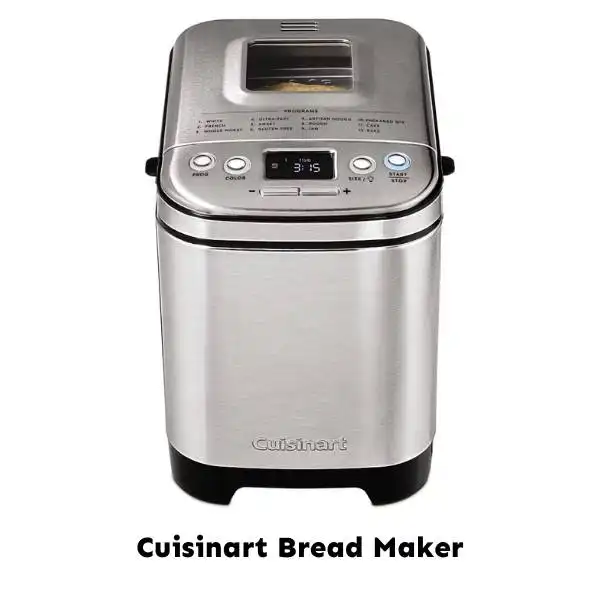
Key Features:
The Cuisinart Bread Maker is the perfect kitchen appliance for any bread lover. With 12 preprogrammed menu options, 3 crust shade settings, and a 13-hour delay start option, this bread maker is fully automatic and easy to use. Plus, the vertical baking pan and compact design make it counter-friendly.
- The LCD display offers a clear view of the countdown time
- 12 pre-programmed menu options for a variety of bread
- 3 crust shades – light, medium, and dark
- The nonstick baking pan is removable for easy cleanup
- Counter-friendly and compact design
Why We Picked It:
- – Get a delicious, fresh loaf of bread with little effort.
- – Choose from a variety of crust colors and sizes to get the perfect loaf for you.
- – 13-hour delay start means you can have fresh bread anytime.
2. Hamilton Beach Bread Maker Machine – Features and Pros/Cons
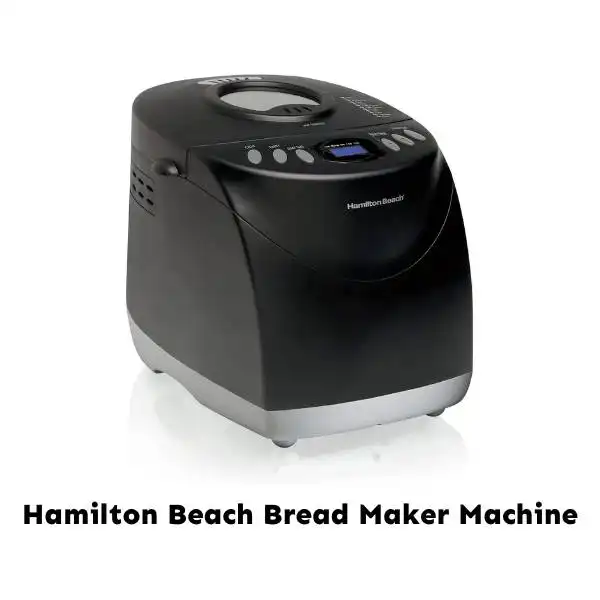
Key Features:
Baking at home is easier than ever with the Hamilton Beach Bread Maker. With 12 pre-programmed settings, you can make everything from traditional white and wheat bread to French loaves, pizza dough, and even cake. And because you control the ingredients, you can be sure your bread is healthy and fresh, without any preservatives or trans fat.
- Make bread in 3 easy steps
- Fresh, Homemade Bread in Just 3 Steps
- 12 cycles including jam and cake
- Loaf size – choose 1.5 or 2.0 lb.
Why We Picked It:
- – Make healthy bread in your own kitchen
- – Choose your own ingredients and nutritional content
- – Enjoy the taste of fresh, homemade bread
3. Zojirushi Home Bakery Bread Maker – Features and Pros/Cons
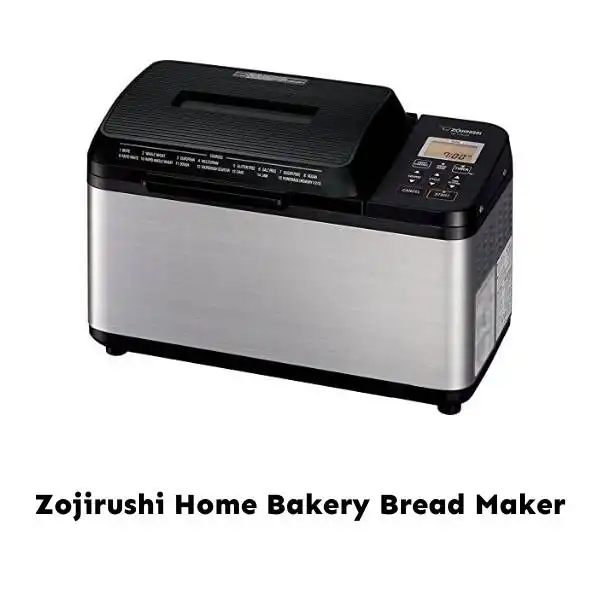
Key Features:
- Various healthy course settings include Multigrain
- Double Kneading Blades thoroughly knead the dough for superior results
- Large Viewing Window
- Large easy-to-read LCD Display
The Zojirushi Home Bakery Bread Maker is a fully-automatic breadmaker that allows you to bake large, traditional loaves of bread with ease. With the convenient 12-hour clock and 13-hour delay timer, you can set the breadmaker to have fresh bread ready when you want it. The European course setting on the breadmaker bakes light and savory bread that pairs well with a variety of cuisines, while the rapid courses allow you to bake a loaf of White or Whole Wheat Bread in just 2 hrs. and 25 mins.
Why We Picked It:
– Choose from three different crust colors
– Bake a loaf of bread in just 2 hrs. and 25 mins.
– Accessories include a Liquid Measuring Cup, Nested Measuring Cups, and a Measuring Spoon
4. Kitchenarm smart bread maker – Features and Pros/Cons

Key Features:
- 29 Automatic Programs include 21 Bread Menus
- 7 Non-Bread Menu
- Fully customizable cycle-level programming homemade menu
- Unique 1-click bread making
You’ll love the Kitchen arm smart bread maker! This 29-in-1 machine is perfect for both newbies and pros. With unique 1-click bread making, it’s easy to get started. And with more menus and recipes for healthy bread, you can be sure you’re getting the perfect loaf every time.
Why We Picked It:
– Automatically make 29 different types of bread, with over 77 recipes included.
– Customize your own bread-making cycles to create unique flavors and textures.
– Be a creative culinary genius, crafting delicious bread that is all your own.
5. FRIGIDAIRE Bread Maker – Features and Pros/Cons

Key Features:
- 15 automatic digital baking programs
- Easy to use
- Large digital display
- Removable non-stick, dishwasher-safe pan for easy cleaning in the dishwasher
If you love fresh, homemade bread but don’t have the time to make it yourself, then the Frigidaire Bread Maker is the perfect solution. With 15 automatic programs, you can make everything from simple white bread to gluten-free loaves to French bread with ease. Just select the cycle you want and hit the start button.
Why We Picked It:
– Enjoy a variety of fresh, homemade bread.
– Choose from 15 preset programs for all types of dough.
– The viewing window and large LCD display make it easy to keep track of your baking progress.
6. Breville Custom Loaf Bread Maker – Features and Pros/Cons
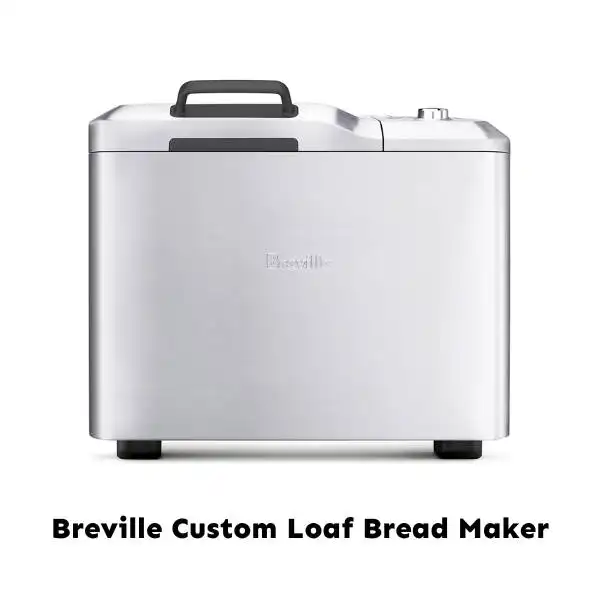
Key Features:
- The Custom Loaf with Automatic Fruit and Nut Dispenser
- Manual & Automatic Programs with LCD Display
- Brushed Stainless Steel
Wake up to the smell of freshly baked bread with the Breville Custom Loaf Bread Maker. With over 60 different recipes to choose from, you can make sure you get the perfect loaf every time. The clever interface computes temperature and baking time when you make a selection, while the easy Turn and Confirm dial gets you started on any recipe in seconds.
Why We Picked It:
– Make a delicious, custom loaf of bread with ease.
– The automatic fruit and nut dispenser ensures perfect results every time.
7. Neretva Bread Maker Machine – Features and Pros/Cons
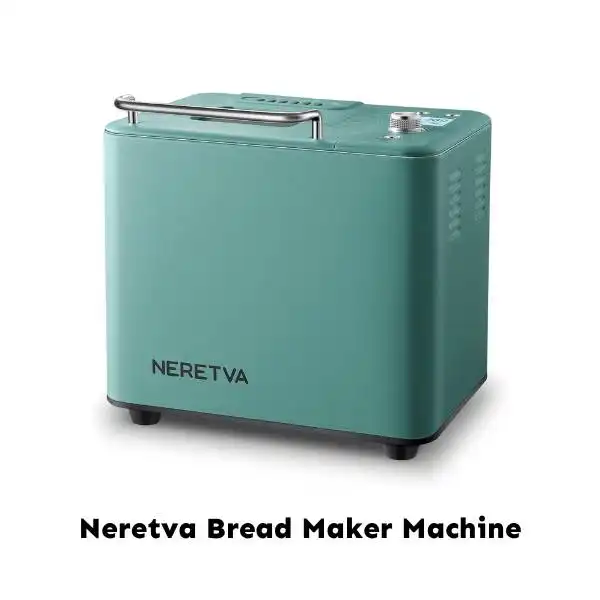
Key Features:
- 20 Customized Automatic Programs
- Unique and compact breadmakers
- Automatically mixes knead ingredients by Kneading Paddle
- Digital LCD display for easier programming
Looking for a top-of-the-line bread maker machine to make fresh, delicious bread without hassle? Look no further than the Neretva Bread Maker Machine! This 20-in-1 powerhouse can make 2 lbs of bread with a variety of settings, including a gluten-free pizza sourdough setting. With a digital LCD display and a large viewing window, it’s easy to keep track of the progress of your bread.
Why We Picked It:
- Automatically mixes knead ingredients by Kneading Paddle, Digital LCD display for easier
- 20 Mins Power Interruption Recovery,
- 360° Double tubes heating promotes heat circulation and allows
- enjoy fresher and healthier homemade bread anytime.
8. Oster Expressbake Breadmaker – Features and Pros/Cons
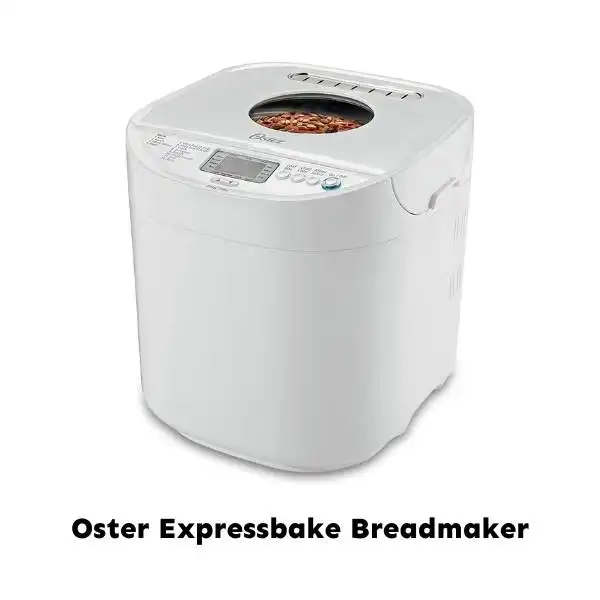
Key Features:
- 2-pound loaf capacity.
- 12 bread settings and 3 crust settings for making a variety of bread
- Expressbake setting bakes bread in under an hour
- 13-hour programmable baking timer for fresh bread anytime
Start your day off right with a delicious, freshly baked loaf of bread from the Oster Expressbake Breadmaker. This versatile machine can bake a 2-pound family-sized loaf in under an hour, or you can use the delay timer to set the baking time up to 13 hours in advance. With multiple settings and a large LCD display for easy navigation, this bread maker is perfect for any level of baker.
Why We Picked It:
– Get perfectly baked bread every time.
– Choose from 3 crust settings to get the perfect texture for your bread.
– The Expressbake setting bakes a 2-pound loaf in less than an hour.
– Wake up to the smell of fresh, homemade bread every morning.
9. Elite Gourmet Programmable Bread Maker – Features and Pros/Cons
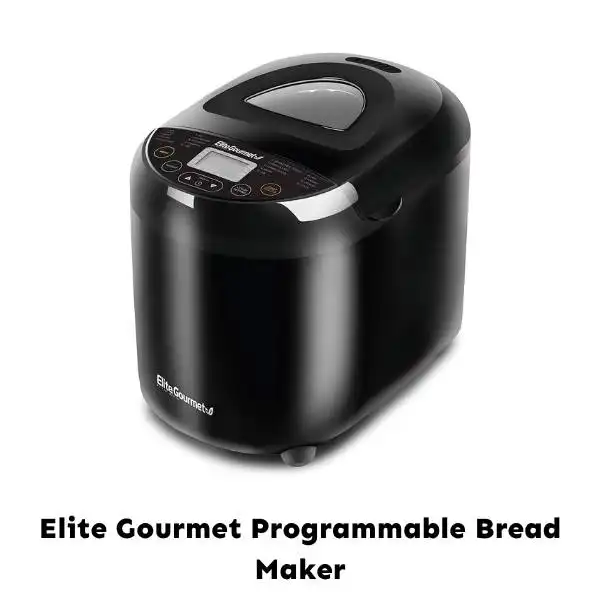
Key Features:
- Making fresh artisan bread right at home is now foolproof and automatic
- Makeup to a 2-lb loaf of bread
- Includes 19-programmed preset menu
- 15-hour delay timer and a 60-minute keep warm function
If you’re looking for an easy way to make delicious, preservative-free bread at home, then look no further than the Elite Gourmet Programmable Bread Maker. With 19 pre-set functions for all types of bread and flour, including gluten-free and whole wheat, this bread machine takes the guesswork out of baking. Just add ingredients, select your cycle and press start. You’ll be enjoying delicious homemade bread in no time!
Why We Picked It:
– Homemade bread is healthier and tastes better than store-bought.
– This machine takes all the guesswork out of it, so you can focus on other things.
– Finally have time to make delicious, preservative-free bread for your family.
10. West Bend Hi-Rise Bread Maker – Features and Pros/Cons
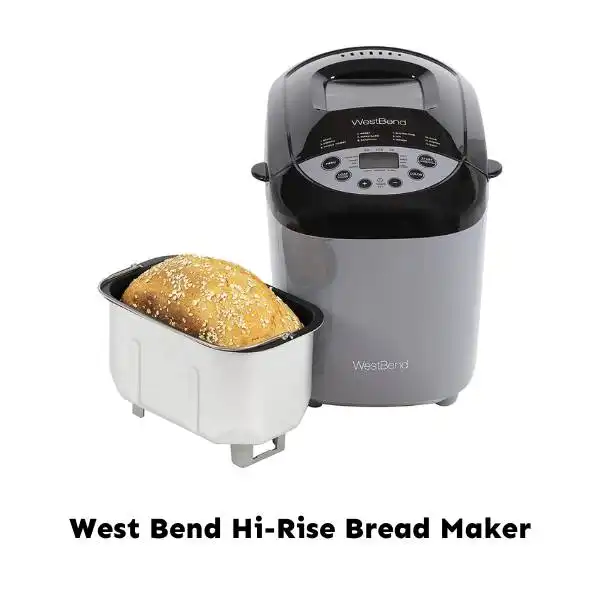
Key Features:
- Programmable Horizontal Dual Blade
- 12 Programs Including Gluten Free
- Custom Setting is perfect for the baker
- Fully customize your settings for the perfect loaf of bread
Looking for an easy and delicious way to make fresh bread at home? Look no further than the West Bend Hi-Rise Bread Maker! With 12 programmable settings, you can make any type of bread you like, from gluten-free to sweet to French. And with three levels of crust control, you can make your bread just the way you like it.
Why We Picked It:
– No more guesswork – the bread maker takes care of all the kneading, rising, and baking for you.
– Choose from 12 programmable settings, including gluten-free.
– Comes with a variety of accessories, including 2 knead blades, a nonstick bread pan, and a measuring cup and spoon.
Tips for Choosing the Right Bread Maker
Choosing the right bread maker can be a daunting task with so many options available. Here are some tips to help you make the best decision:
Consider Your Needs
Evaluate your baking habits, kitchen space, and desired bread types. Consider the size and capacity, available settings, and programmable features that align with your preferences and requirements.
Research Customer Reviews
Read customer reviews and ratings to get an understanding of the experiences and satisfaction levels of other users. Pay attention to common feedback regarding performance, ease of use, and durability.
Set a Budget
Determine your budget range and look for bread makers within that range. While more expensive models may offer additional features and higher quality, there are also budget-friendly options that provide satisfactory results.
Compare Features
Compare the features, settings, and additional functionalities of different bread makers. Look for the ones that offer the specific features you desire, such as programmable timers, crust options, or specialized bread settings.
Maintenance and Cleaning Tips
To ensure the longevity of your bread maker and maintain optimal baking performance, follow these maintenance and cleaning tips:
Cleaning the Bread Pan and Kneading Paddle
After each use, remove the bread pan and kneading paddle and wash them with warm soapy water. Avoid using abrasive materials that can damage the non-stick coating.
Wiping Down the Exterior
Regularly wipe down the exterior of the bread maker with a damp cloth to remove any spills or crumbs. Ensure the bread maker is unplugged and cooled down before cleaning the exterior.
Dealing with Stuck Bread
If bread sticks to the pan, allow it to cool before attempting to remove it. Use a plastic or silicone spatula to gently loosen the bread, being careful not to scratch the non-stick surface.
Conclusion
Choosing the right bread maker can elevate your baking experience and allow you to enjoy freshly baked bread in the comfort of your home. Consider factors such as size, settings, programmable features, and maintenance requirements to find the perfect bread maker for your needs. With the right bread maker, you can indulge in the aroma and taste of homemade bread whenever you desire.
FAQs (Frequently asked questions) about Bread Maker Buying Guideline
How do I choose a breadmaker?
When choosing a breadmaker, consider factors such as your budget, desired features (such as different bread settings or a delay timer), the loaf size options available, ease of use, and the reputation of the brand. Reading customer reviews and comparing different models can also help in making an informed decision.
What size bread maker do I need?
The size of the bread maker you need depends on the size of the loaves you want to bake. Bread makers typically come in sizes ranging from 1 pound to 2.5 pounds. If you have a small household and prefer smaller loaves, a 1- or 1.5-pound bread maker should suffice. For larger families or if you enjoy baking bigger loaves, opt for a 2-pound or 2.5-pound bread maker.
How many watts should a bread maker have?
The wattage of a bread maker determines its power and heating capabilities. Generally, bread makers range from 450 to 1500 watts. Higher wattage models tend to have faster baking times and better heating efficiency. For most home users, a bread maker with a wattage of around 600 to 900 watts should be sufficient.
Is it worth getting a bread maker?
The decision to purchase a bread maker depends on your personal preferences and lifestyle. Bread makers offer convenience, allowing you to bake fresh bread at home with minimal effort. They also provide the flexibility to experiment with various ingredients and flavors. If you enjoy homemade bread and want to have control over the ingredients and process, a bread maker can be a worthwhile investment.
What is the difference between a 1.5 and 2-pound bread machine?
The difference between a 1.5-pound and 2-pound bread machine refers to the maximum loaf size each machine can handle. A 1.5-pound bread machine is designed to bake loaves weighing up to 1.5 pounds, while a 2-pound bread machine can handle loaves up to 2 pounds. The choice between the two depends on your preference for smaller or larger loaf sizes.
What size loaf does 500g bread mix make?
A 500g bread mix typically yields a loaf that weighs approximately 500 grams. This is equivalent to 1.1 pounds or a 1-pound loaf. It’s important to note that the final loaf size can vary slightly depending on factors such as the ingredients used, the specific bread maker model, and personal preferences for crust thickness and texture.


